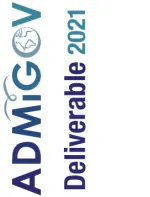Legal pathways to regularisation of illegally staying migrants in EU Member States

ADMIGOV Deliverable 2.7 (2021)
This paper aims to identify and compare the existing legal pathways for the regularisation of illegally staying migrants in the Member States of the European (EU), in order to promote the discussion about EU standards on this issue. In 2017, between 2.9 and 3.8 million migrants were estimated to be residing irregularly in Europe (Connor and Passel, 2019).1 The EU Return Directive2 , which provides the legal framework on deportation of illegally staying migrants, gives Member States two main options upon detecting a third-country national staying irregularly on their territory: order them to leave to a third country or another Member State3 , or authorise their stay.4 From a political and legal perspective, however, all Member States focus on return policies. In 2013, at least 16 Member States had not installed mechanisms for regularisations of this group (Heegard Bausager, Köpfli Møller and Ardittis, 2013, p. 68). The unwillingness of Member States to do so becomes most evident in the situation of third-country nationals who cannot be removed (‘non-removable returnees’) due to practical or legal reasons and who have access to a (provisional) legal status only in few countries.
Notes:
1-Data for the EU28 and EFTA member states.
2-Return Directive
3-Art. 6(1) Return Directive
4-Art. 6(4) Return Directive